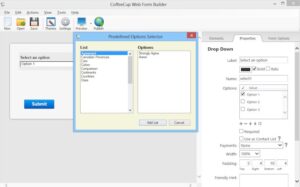

This is often caused by invalid HTML syntax. Why is there extra space before or after my table? If the document does not require scrolling, then this leaves a right "margin" that cannot be removed.ħ.8. For information on how you can specify that the browser omit these margins, see the answer to the question " How do I eliminate the margins around my page?"Īlso note that Navigator always leaves room for a scrollbar on the right, but draws the scrollbar only when the document is long enough to require scrolling. Graphical browsers leave a narrow margin between the edge of the display area and the content. In such situations, percentage values can be used relatively safely, even though they are prohibited by the public specifications.ħ.7. However, their interpretations (and those of other table-aware browsers) happen to match when combined with. It should be noted that Netscape and Microsoft's browsers interpret percentage values for differently.

However, the HTML 4.0 DTD allows percentage (and other non-integer) values, so an HTML validator will not complain about. The HTML 3.2 and HTML 4.0 specifications allow only integer values (representing a number of pixels) for the WIDTH attribute of the TD element. This text will appear to the left of the table.Įven if there is additional room to its left. Use or to mark the end of the text that is to flow around the table, as shown in this example. (Use ALIGN="left" to float it to the left.) Any content that follows the closing tag will flow around the table. You can use to float a table to the right. How do I align a table to the right (or left)? To avoid this, you can put the cell's contents in or depending on the amount of text in the cell.ħ.5. In these browsers, the contents of the cells are now displayed centered, which is not what is intended. This causes some problems with browsers that do support CENTER but not tables, such as Lynx. Put around the entire table for these browsers. The "correct" way of doing it is, but this doesn't work in several popular browsers. You can put the table inside the form, and then use the table to position the INPUT, TEXTAREA, SELECT, and other form-related elements, as shown in the following example. You cannot place the form within the table without placing it inside a TH or TD element. You cannot start a form in one TH or TD element and end in another. To position form-related elements relative to each other, the entire table must be within the form. This can be a useful for positioning a form relative to other content, but it doesn't help position the form-related elements relative to each other. Small forms are sometimes placed within a TD element within a table. You're best advised to include every and, even though the HTML spec doesn't require them otherwise Netscape users may not be able to view your page.ħ.3. The main caveat about nested tables is that Netscape has problems with them if you don't close your TD and TR tags meticulously. This is the second cell of the inner table This is the first cell of the inner table This is the second cell of the outer table, This is the first cell of the outer table Yes, a table can be embedded inside a cell in another table. See Alan Flavell's document on tables for a good discussion at URL. How do I make a table which looks good on non-supporting browsers? Why is there extra space before or after my table?Īre there any problems with using tables for layout? Section 7: HTML Tablesħ.1. HTML Tables How do I make a table which looks good on non-supporting browsers?


 0 kommentar(er)
0 kommentar(er)
